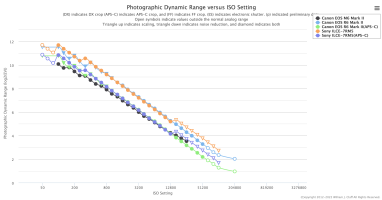Hello fellas,
I heard the M6 line is going away, so what would be a best next step.
I use my mark II for 4K video and macro video for content creation. Love the camera but wish it's low light performance was better.
What camera body should I be looking into? On youtube it seems everyone says Sony is the best for low light. I put my F stop really high to get all details in a 3D manner when doing macro's so I was wondering if Canon makes a camera that competes well.
I heard the M6 line is going away, so what would be a best next step.
I use my mark II for 4K video and macro video for content creation. Love the camera but wish it's low light performance was better.
What camera body should I be looking into? On youtube it seems everyone says Sony is the best for low light. I put my F stop really high to get all details in a 3D manner when doing macro's so I was wondering if Canon makes a camera that competes well.

